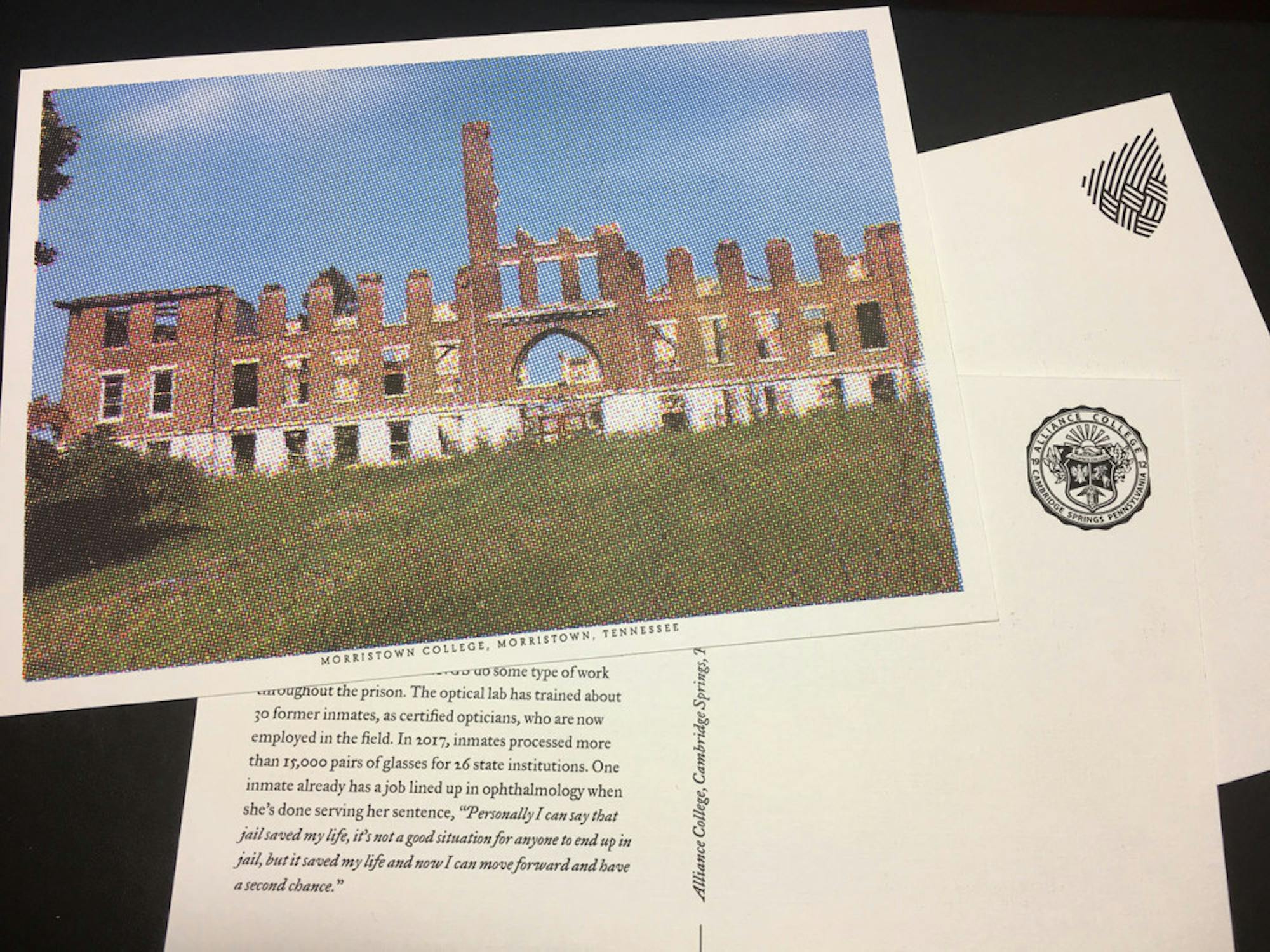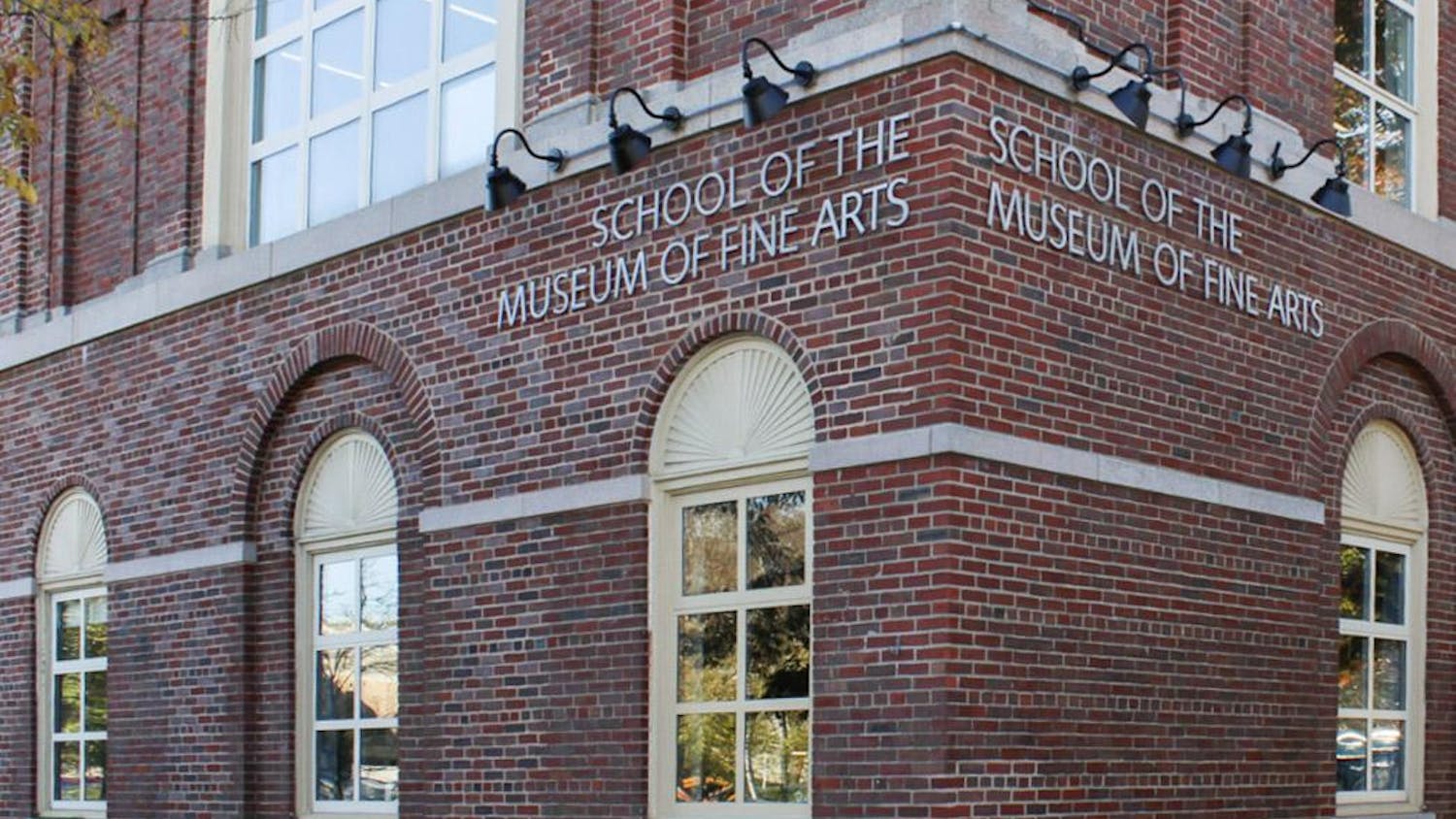The recently revealed college admissions scam reinforced the long-established image of higher education institutions as the playground of the privileged. With Tufts being the epitome of such institutions, it is almost impossible to argue against the socioeconomic homogeneity of universities. However, it is also important to recognize that numerous higher education institutions are also victims of financial crises, as emphasized by Chantal Zakari in her latest work “Defunct Colleges” (2019), currently on display at her show "Cogent Message" at Kingston Gallery.
A Turkish-Levantine currently residing in Boston, Zakari came to the United States at a young age. She studied visual communications at the Art Institute of Chicago. After graduation, she accepted various freelancing design jobs while working as an art teacher and an independent artist. Chantal Zakari is a professor of the practice at the School of Museum of Fine Arts (SMFA) at Tufts. She was also an associate member of the Goat Island performance group (1995–2010) and a board member of Belmont World Film.
The exhibition, entitled "Cogent Message" features the work "Defunct Colleges," a series of 16 postcards, each depicting an architectural feature of a failing or failed American university. On one side of the postcards are prints of the features, accompanied by short introductory texts regarding the universities’ histories, present plights and possible futures. “Defunct Colleges” was created in the postmodern manner of appropriating found images. While Zakari photographed some printed photos, such as the photo of Newbury College, most photos were found on the internet. However, all the photos were stylistically altered, as they were photoshopped and Risograph-printed with various innovative halftone patterns. And similarly, the stories for the universities came from the internet, but were significantly edited and shortened.
The inspiration for “Defunct Colleges” originated from Zakari’s realization of the transience of institutions while she was a professor at the SMFA when it was undergoing financial issues before merging with Tufts.
“The inspiration came from the fact that the SMFA was closing. And so I personally, along with my colleagues ... went through a really overwhelming period of time. So here’s an institution that’s [150] years old, and I have a job there, and I will be there forever, and I will retire there. And I get this understanding that no, this institution can close. So that’s the significance of this architecture ... [it may seem permanent,] but it falls apart.”
Zakari intended for the “Defunct Colleges” series to be both visually and conceptually diverse.
“Part of how I created this series was [by] looking at the images [and figuring] out which images were more interesting. The architecture was what drove this collection; the way I selected them [was intended to generate] a variety of architecture,” Zakari said. “I wanted a variety of stories being represented here. There are no same stories, and there are no same buildings."
When speaking of the related issues of the rising costs of both attending and operating a college, Zakari attributed the problem, in part, to upgraded infrastructural support on college campuses.
“Part of [the rise of college tuition] has to do with the fact that when I went to school, there were no dorms at the Art Institute [of Chicago]. Food was difficult, I had to make my own food ... there wasn’t a gym [or] all these things that you guys have, [including a] mental [health] support system…”
According to Zakari, faculty treatment was improved alongside physical conditions.
“Maybe 40 years ago, faculty, especially in art, didn’t even have full-time jobs, they did not have healthcare, they didn’t have retirement,” Zakari added.
However, Zakari's main goal is not to prescribe specific solutions to the issue of rising costs. Zakari expects that “Defunct Colleges” will serve as a historical record and raise awareness about the issue.
“I can’t foresee the future. There are academics that could. [But] looking at [academic institutions] from an artistic standpoint, I am alerting people to the change that’s happening in the industry. As an artist, I’m more interested in pointing at things [and] luring [my] audience in with images and stories. I don’t have a thesis — that’s not my role.”
More concretely, Zakari felt the need to tell the stories of defunct colleges because of their widespread relevance.
“[This project is informed by] not just by my personal experience of being in a college that was closing, but [also] your personal experience as a student, with all the debts that you have to pay," Zakari said.
“Defunct Colleges” also captures the mournful nostalgia of decaying architecture in relation to the disappearance of the original institution that it once hosted.
"The separation of the institution and the building is very difficult. Like when you think about Harvard, you do think of the building as well as the institution. [But] when the institution disappears, the building transforms into something else," the artist said.
To create this sense of nostalgia, Zakari used the traditional methods of printing one color at a time mixed with modern techniques to generate both antique-looking and innovative patterns on her works, which she called “postcards from the future.”
“[Antique shops] usually have ... a little box with old postcards. There is a whole series of Curt Teich postcards, which used to be a company from a 100 years ago. So I’m kind of mimicking [the old Curt Teich postcards], but I’m printing them in a very high-tech way,” Zakari said.
By appropriating older methods of printing, Zakari is able to transform the eclectic and older modes of postcard production.
“Typically, [with halftone printing], you make only [dots]. But I changed that, and I manually created different colors. And I’m also printing [my images] myself, one color at a time, so they are not digital prints, they are really screenprints. [The enlarged dot patterns] make the [postcards] more interesting texturally, but they also make a reference to the old postcards ... I am kind of like the postcard designers from 50 years ago, but I’m also making patterns from the future.”
Alongside the exhibition of “Defunct Colleges” is “Cogent Message” (2018), the eponymous work of the exhibition, another higher-education-related installation by Zakari. “Cogent Message” is a collection of reimagined, artificial letterheads of defunct American colleges. To compile the collection, Zakari printed found logos of the defunct colleges online on linen paper. In addition, the letterheads included faint prints of found images of college professors and college students, listed in the order in which they appeared on Google.
While composing “Cogent Messages,” Zakari had a deeper realization as to the severity of the financial struggles faced by small, independent universities.
“I had to stop [including defunct colleges after 2013]. Because I couldn’t find the logos of schools that were defunct past 2013. Some of the logos [of the schools] start disappearing; their corporate identity disappears. And that’s the ultimate death of the school.”
With her show “Cogent Messages,” Zakari's work directs viewers' attention to small, struggling institutions of higher education amidst the current stereotype that colleges have capital, privilege and power.
“Defunct College” and “Cogent Messages” will be on view at the Kingston Gallery in Boston until March 31, 2019.
CORRECTION: Chantal Zakari is not a full-time faculty member at the SMFA. Zakari is a professor of the practice. The article has been updated to reflect this change. The article has also been updated to clarify that Zakari made halftone patterns with dots, not dice. The Daily regrets these errors.
Chantal Zakari's 'Cogent Message' deconstructs institutional failings

Postcards from Chantal Zakari's 'Defunct Colleges' (2019) are pictured here.





